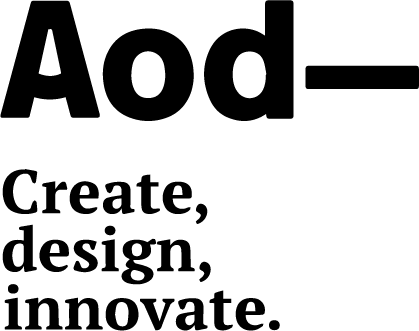
Design Thinkers for Business Success
Share
Could ‘Design thinking’ be useful for businesses? – Can a design thinker become anything else but a designer? Perhaps a corporate CEO? An entrepreneur leading their own brand? a business manager? The answer is, ABSOLUTELY. Find out how and why, with the views expressed by AOD Founder and Managing Director Linda Speldewinde.
"Design thinking is no longer limited to designers and design thinkers are no longer limited to design studios."
‘Design thinking’ is now recognised as one of the most powerful skills that transforms ordinary businesses into great success stories. Companies like Apple, Air BnB and Google are examples of companies that are not ‘design’ companies but have record-breaking, worldwide success due to being led by design thinkers. ‘Design thinking’ is in such demand now, that reputed universities like Harvard and Stanford are now offering special courses to help business professionals become design thinkers.
This week at AOD in Colombo, I saw the first group of ‘design camp’ students completing their design immersion programme that introduced them to design thinking and creative problem solving. Although these youngsters are creative and love design, they are not necessarily looking to become designers in a traditional sense; their future paths are now readjusted so that they can begin to look at important roles as business managers, CEO’s, founders of their own businesses and lead to success through design thinking. I see this as a great beginning for design thinking led commercial successes for Sri Lanka. So what is this ever-important ‘design thinking’? How is it so powerful? And what can design thinkers achieve in today’s world?
Let’s first understand what design thinking means. Recently the Forbes magazine compared our traditional approach to ‘making business’, to that integrated with design thinking; usually businesses come up with an idea and then try to figure out how to sell it. However, with design thinking integrated business, you first analyse people, identify a true demand and a prevalent need among them and then, find a product/service giving a solution for that. This reverse method where, instead of trying to forcefully create a demand, businesses provide an interesting and creative solution for an authentic need, is ‘design thinking’ in a nutshell. It not only makes selling easier and more organic, but clients remember the brand better because they have really experienced it as a unique solution to a personal need.
Coming back to the design thinking process that I summed up earlier, we need to also understand that it is not that easy to find a unique, creative solution to a problem. This process involves several stages such as extensive research, defining the problem, forming a point-of-view about it, coming up with creative solutions, testing these out, discarding what doesn’t work and starting over or improving the ideas that work and so on. This process is what designers/design thinkers are taught during their education, and trained to perfect over the years.
So after these design thinkers have perfected their creative thinking process, do they only become designers? Yesterday, yes, design thinkers were restricted to becoming designers and to design studios. But today and even more tomorrow, design thinkers’ job titles no longer need to carry the word ‘designer’. Design thinkers are now holding positions like CEO, Vice president, Design Manager, Head of Experience design etc. A few famous examples would be Sir Jonathan Ive- the senior vice president of Apple with a net worth of 130 million US$, Tim Brown CEO of IDEO and known as a champion of design thinkers, Margaret Stewart director of product design at Facebook and Melody Roberts Senior director of experience design innovation at McDonald’s Worldwide. What all these highly valued professionals have in common is the ‘design thinking’ mind-set that can produce better results in business. Looking at all these successes internationally, let’s look at how this becomes relevant to Sri Lanka.

"But today and even more tomorrow, design thinkers’ job titles no longer need to carry the word ‘designer’. Design thinkers are now holding positions like CEO, Vice president, Design Manager, Head of Experience design etc. A few famous examples would be Sir Jonathan Ive- the senior vice president of Apple with a net worth of 130 million US$, Tim Brown CEO of IDEO and known as a champion of design thinkers, Margaret Stewart director of product design at Facebook and Melody Roberts Senior director of experience design innovation at McDonald’s Worldwide."
IMAGE: Christopher Bailey, Burberry's CEO is a designer.
Today, with the world getting smaller, our export markets and local businesses are facing intense competition from international companies and large multinationals. This is not because their products/services are any lesser, but simply because they haven’t re-looked at the way they deliver to the changing needs of the markets. This is where design thinkers can deliver much for the country. As professionals trained to analyse clienteles, anticipate their needs and trends followed, design thinkers can direct businesses in the direction of the real demand and create great successes.
This great future needs the support of both business and our youth. Businesses now recognize the importance of designers and I think a future shift to trust design thinkers’ decisions and innovation capability outside the design studios and within the boardrooms and decision-making power chairs, will help businesses go that extra mile. Similarly, the youth also need to start recognising the myriad opportunities that design thinkers have outside their ‘strictly design’ roles and step into design careers with bigger and brighter ambitions. If we can generate this well-needed confidence in design thinking and make good use of the growing set of design thinkers in Sri Lanka, it will indeed make a remarkable future for Sri Lankan business.


